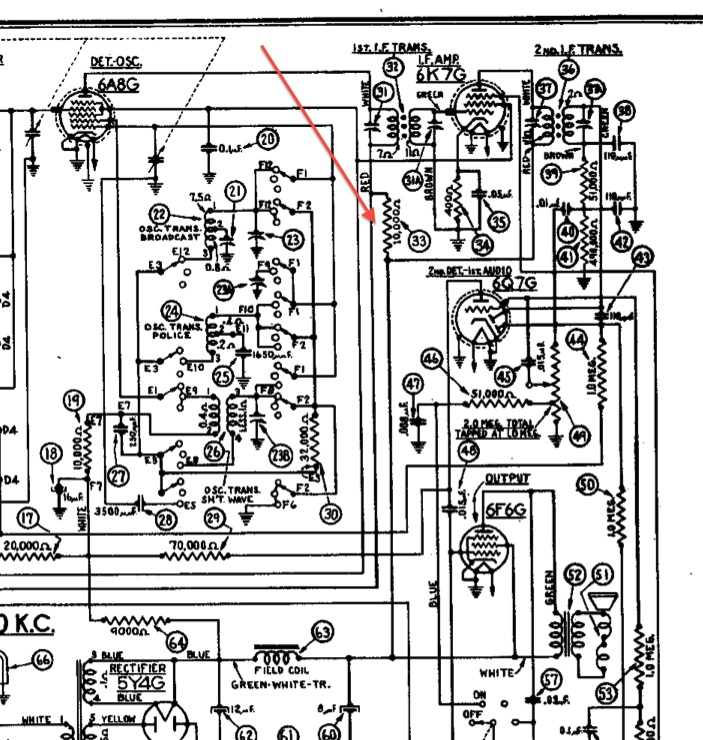08-30-2013, 09:21 AM
Hi All,
This is sort of a techy question but, as I work through the IF section on my 37-620 checking values, I see that resistor Part 33 is 10K on the schematic, but 1K on the parts list. Turns out it looks original and is in fact 1K (1.1K actually).
Looking at the socket voltages (haven’t ever been able to fire it up due to its poor condition) the plate of the first IF is 250V and the plate of the Det.Osc. is 245V. So 5V is dropped across Part 33. That’s only .5 ma. My theory is probably a little weak but that doesn’t seem like enough current to run both the 6A8 and the RF section 6K7. In fact it doesn’t seem like enough to run either tube alone. OK, so 1K is probably correct, the radio must have worked at some point. So anyway, why bother to put in a 1K at all? Seems like it would work fine without that resistor.
Anybody got any thoughts on this?
Tks,
Vic


This is sort of a techy question but, as I work through the IF section on my 37-620 checking values, I see that resistor Part 33 is 10K on the schematic, but 1K on the parts list. Turns out it looks original and is in fact 1K (1.1K actually).
Looking at the socket voltages (haven’t ever been able to fire it up due to its poor condition) the plate of the first IF is 250V and the plate of the Det.Osc. is 245V. So 5V is dropped across Part 33. That’s only .5 ma. My theory is probably a little weak but that doesn’t seem like enough current to run both the 6A8 and the RF section 6K7. In fact it doesn’t seem like enough to run either tube alone. OK, so 1K is probably correct, the radio must have worked at some point. So anyway, why bother to put in a 1K at all? Seems like it would work fine without that resistor.
Anybody got any thoughts on this?
Tks,
Vic



![[-] [-]](https://philcoradio.com/phorum/images/bootbb/collapse.png)


